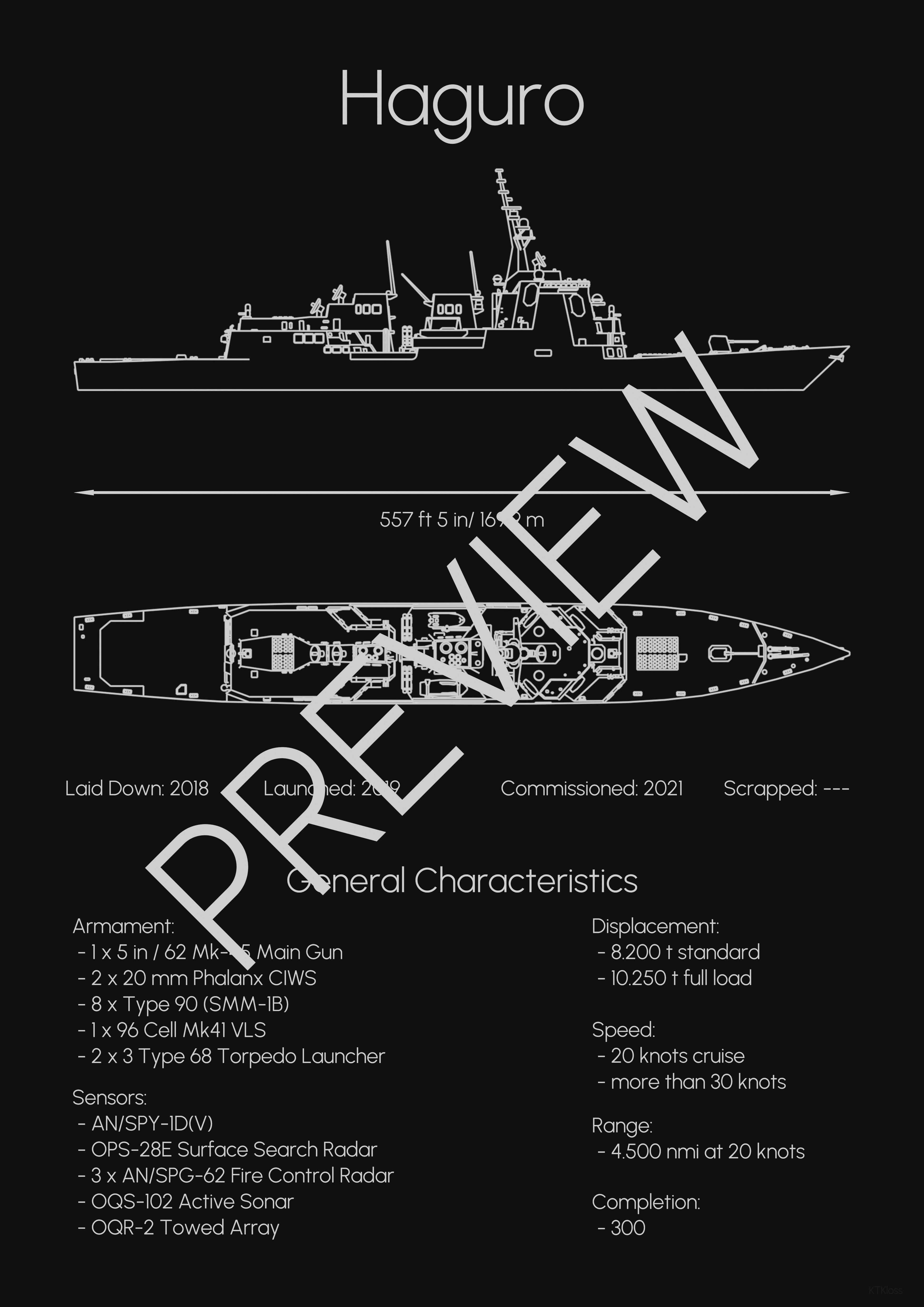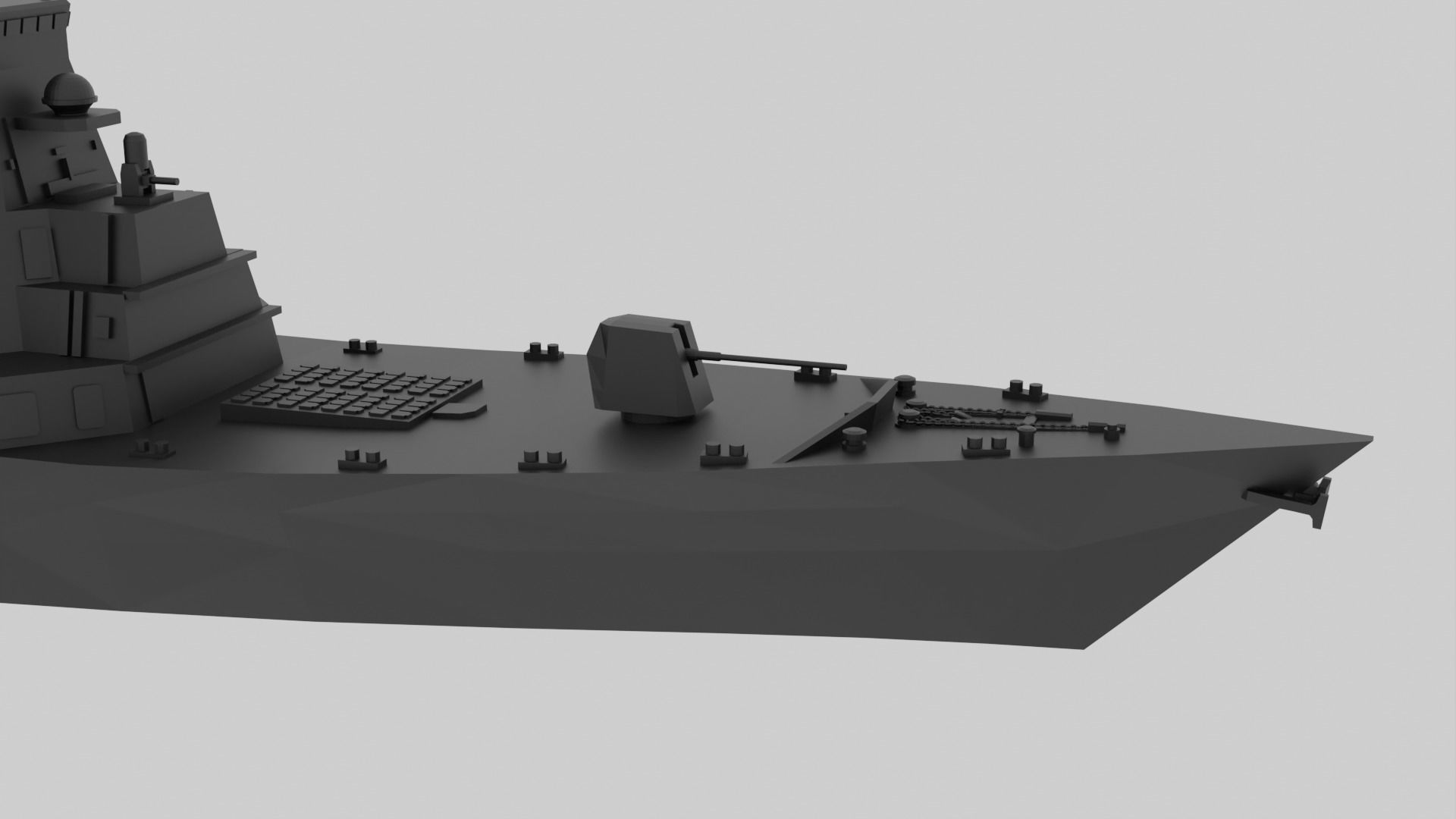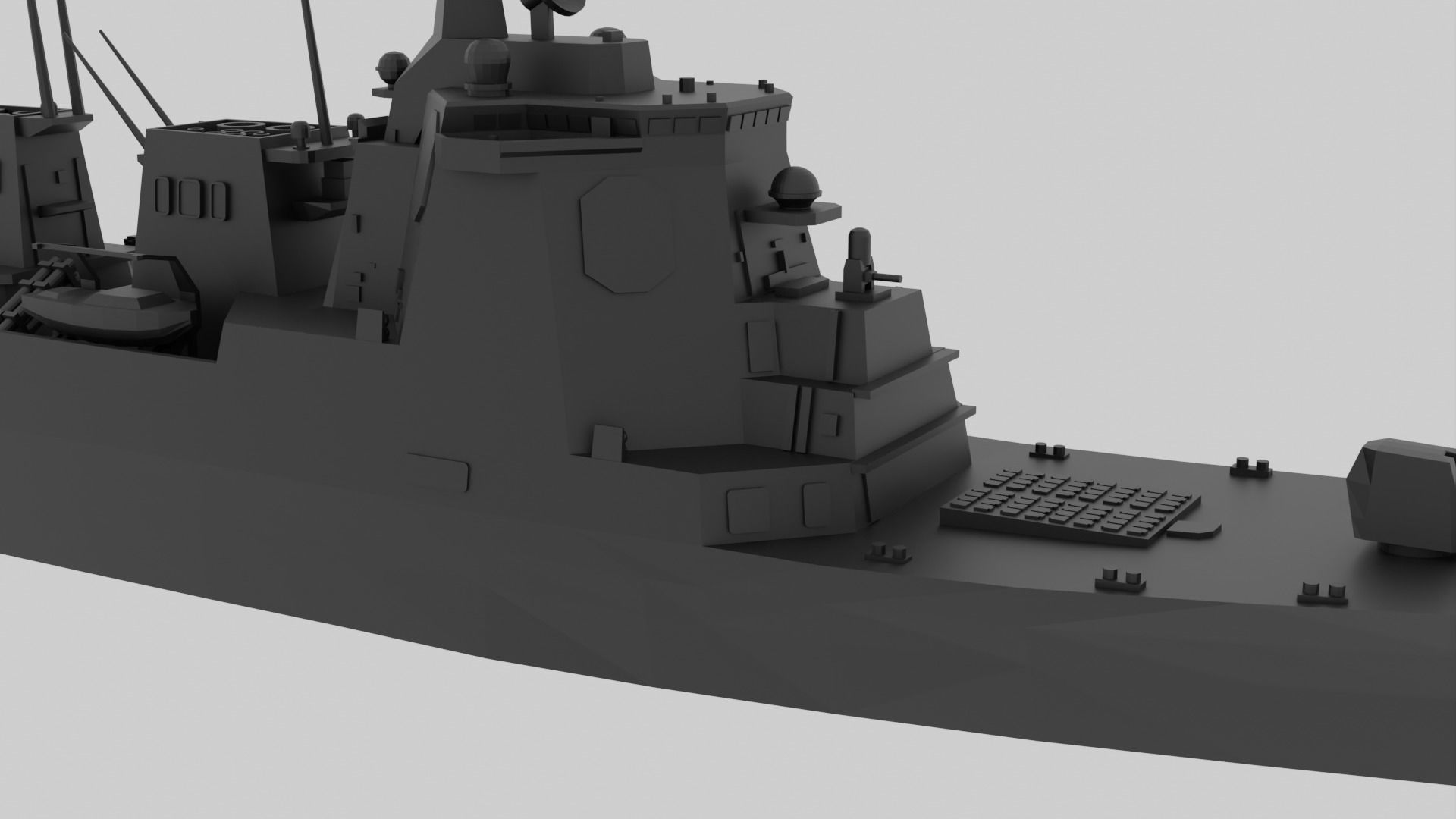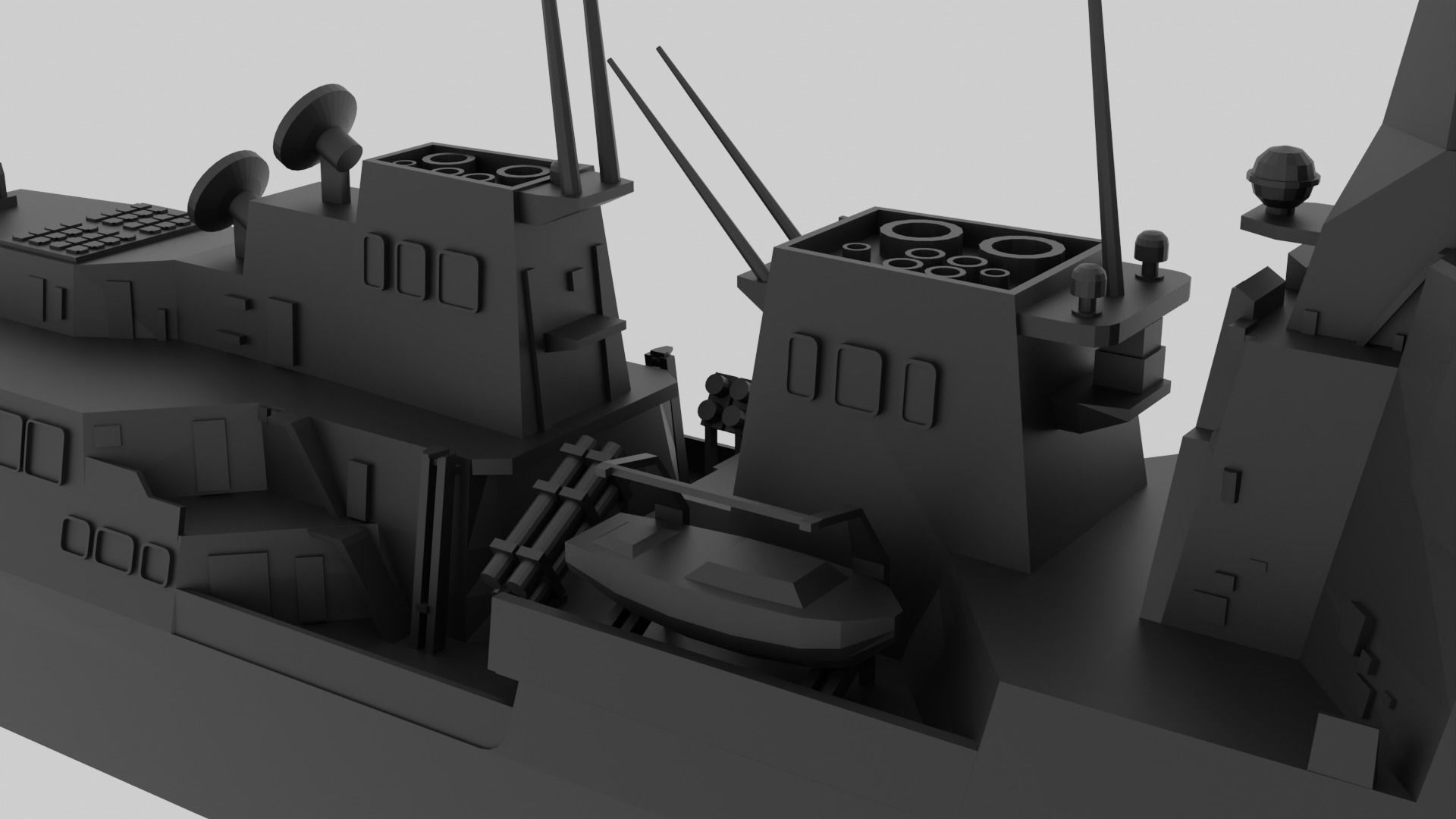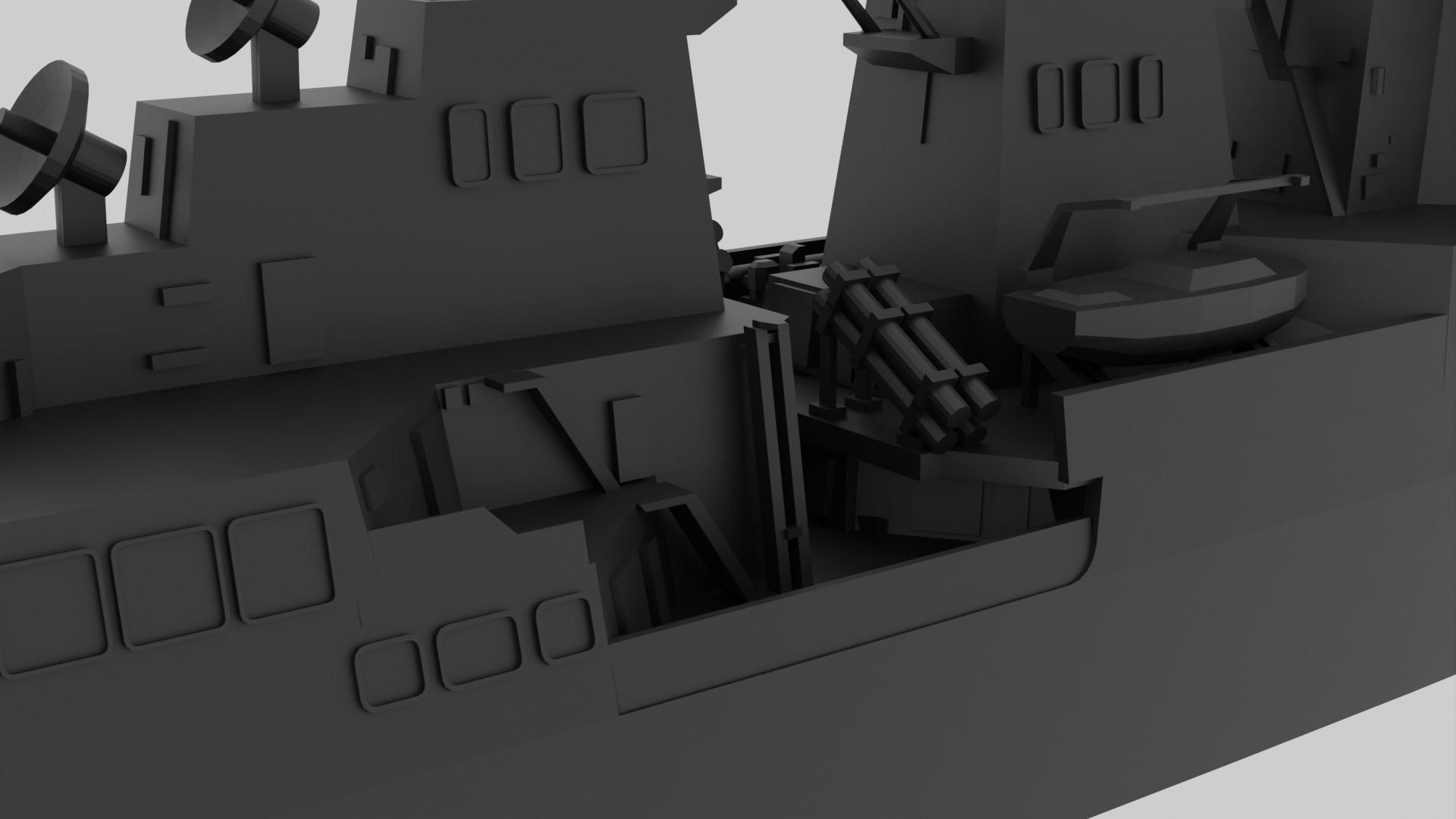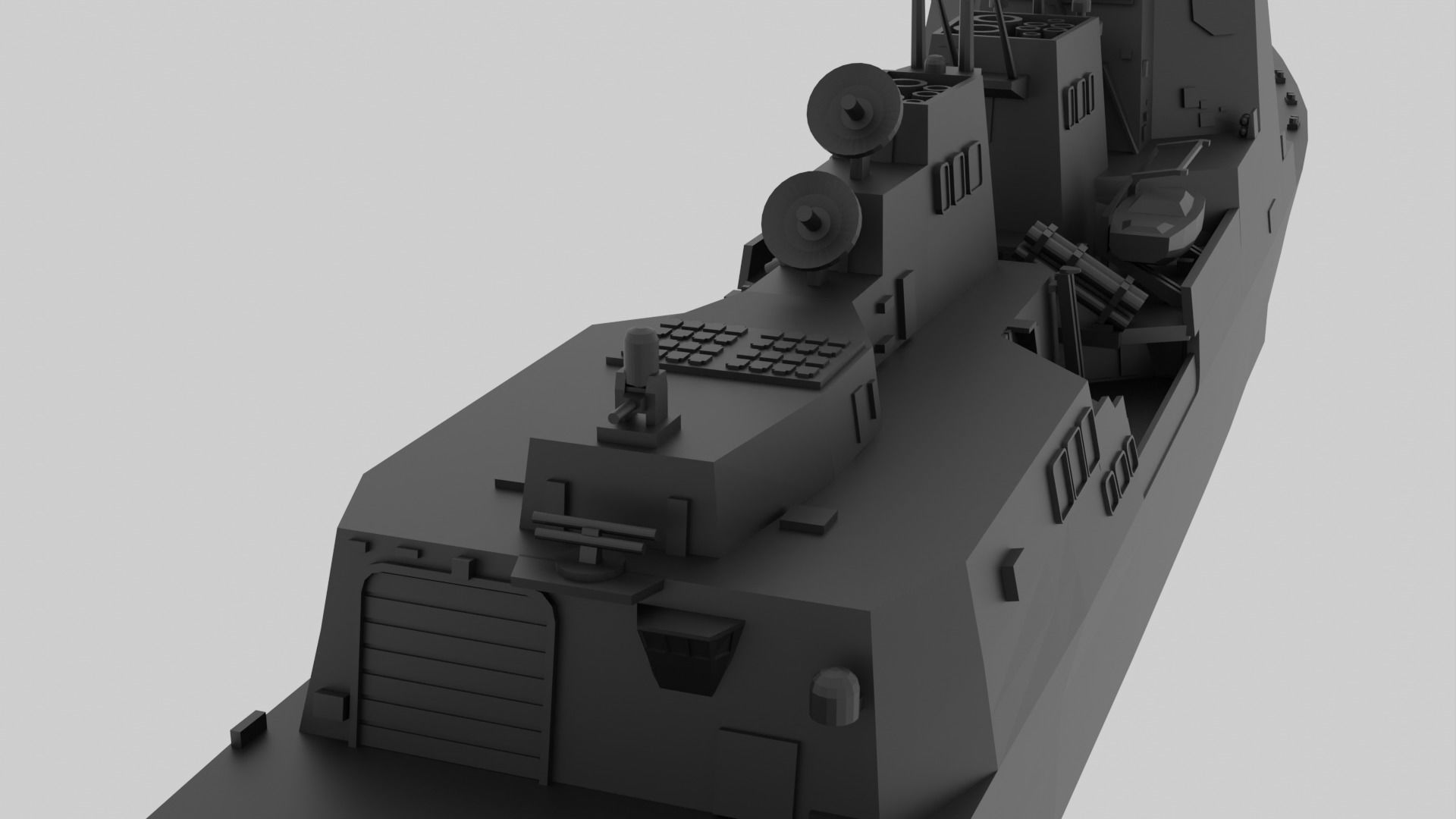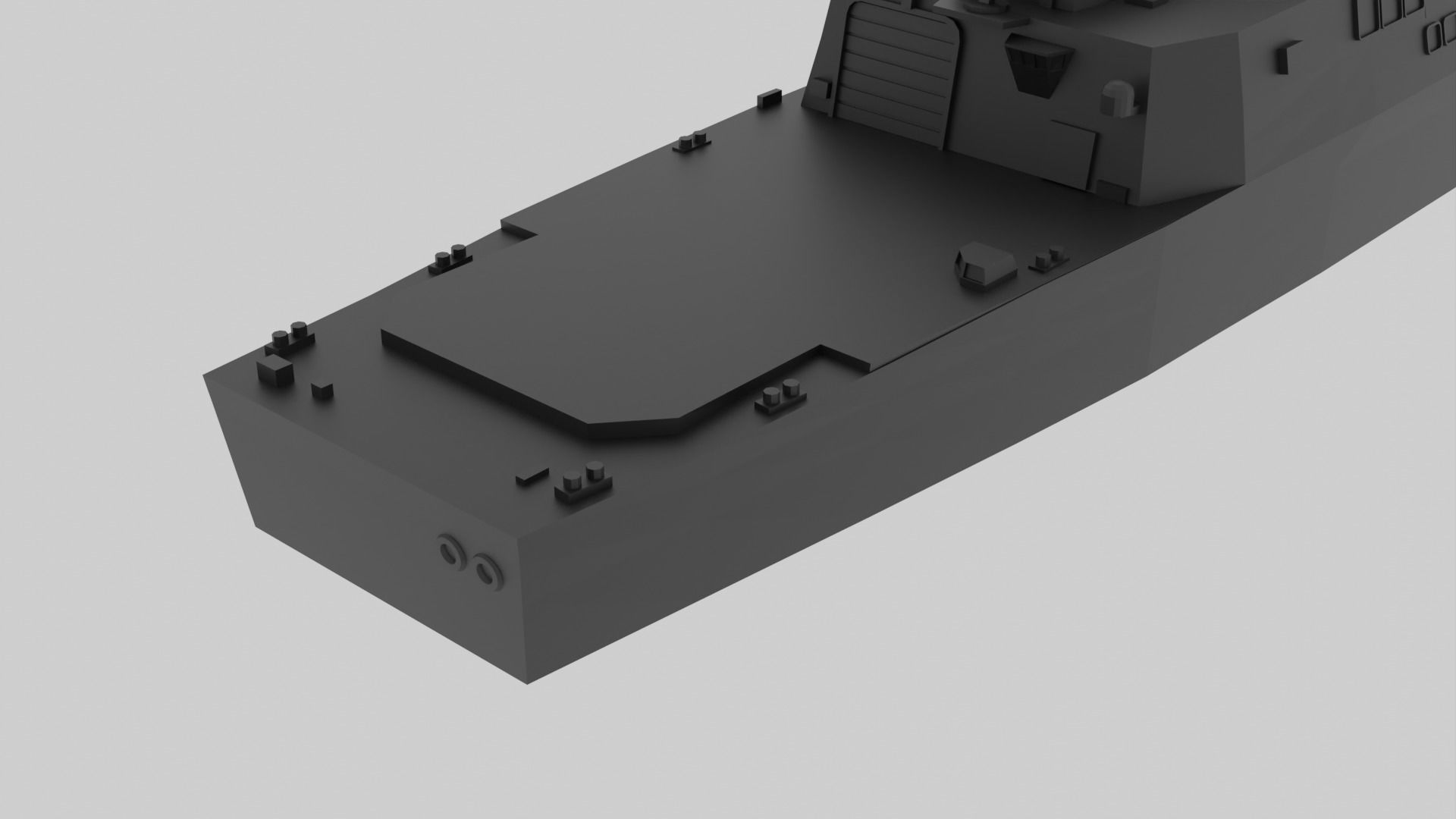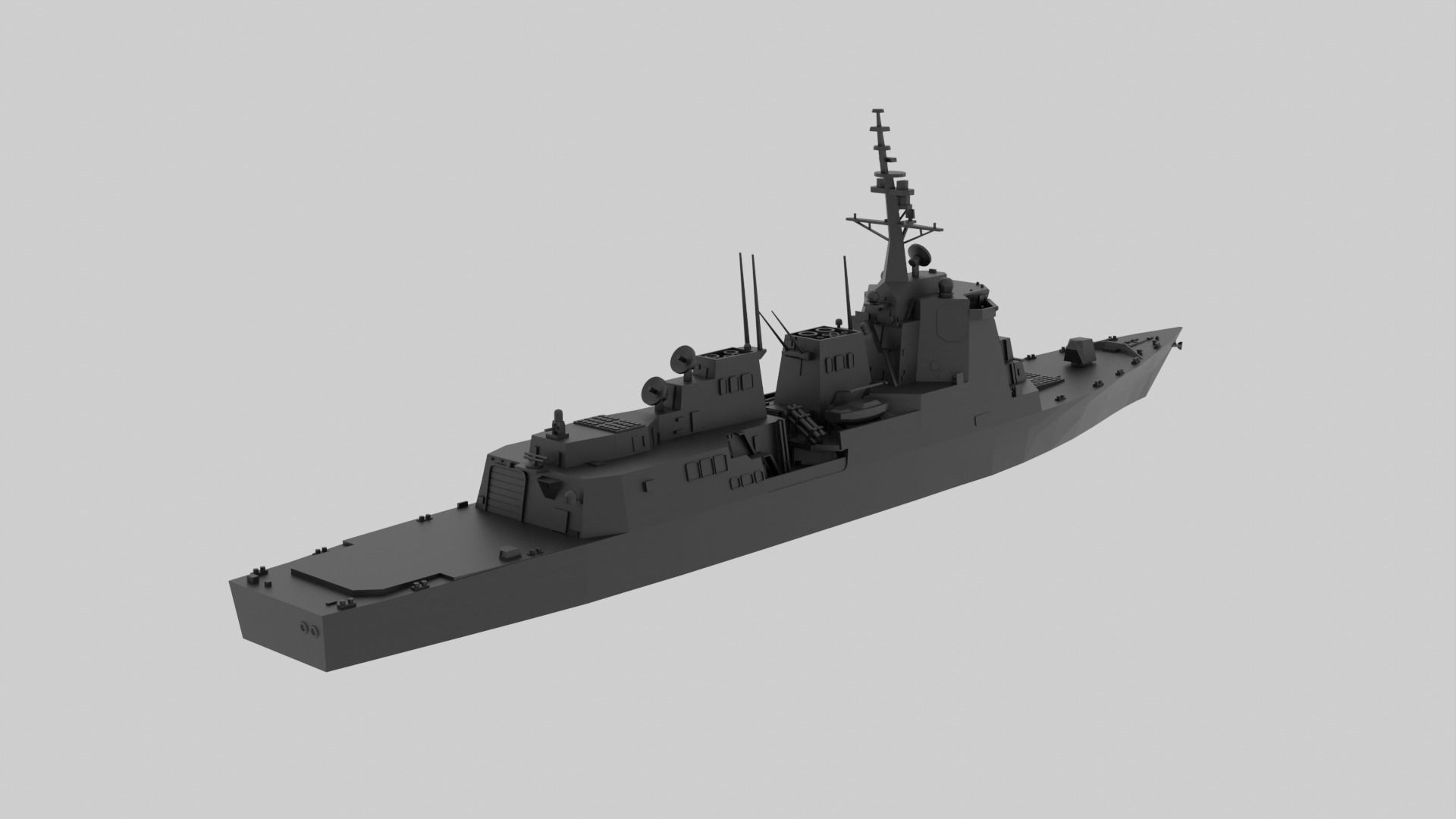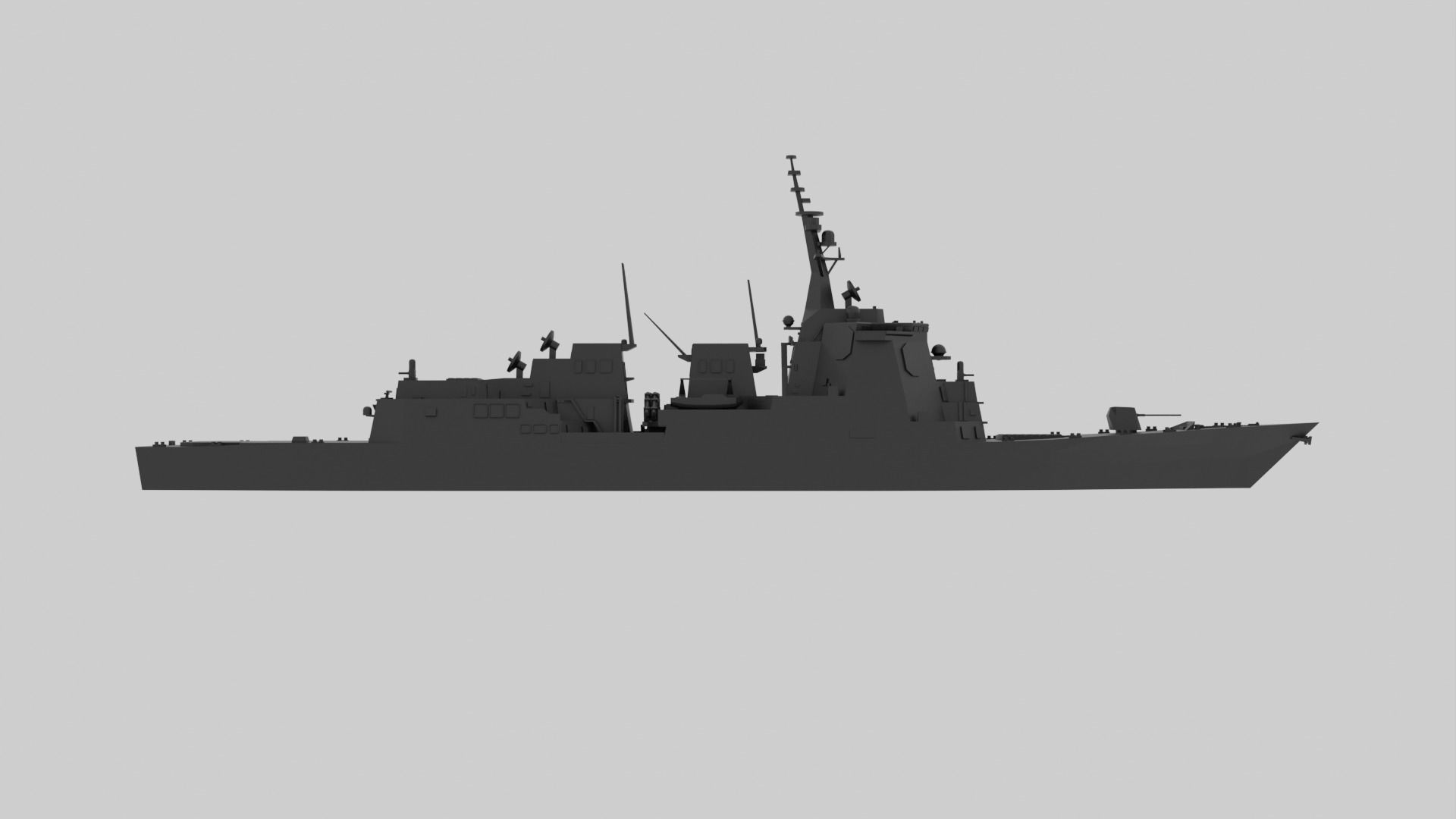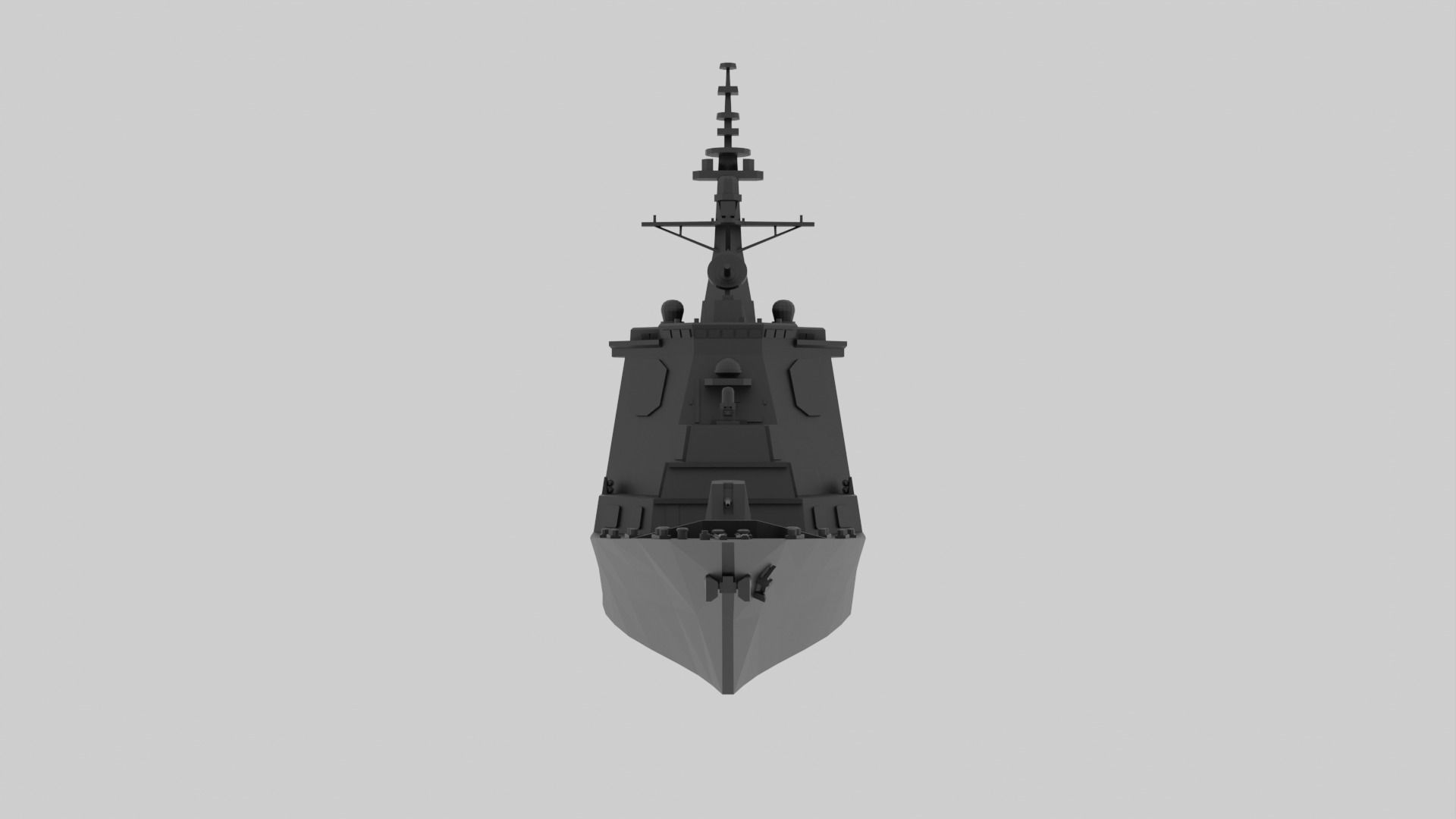
JS Haguro - Model for small scale printing 3D print model
The Maya-class is a class of guided-missile destroyers designed and built by Japan and was the third class employing the US-built AEGIS system. Two units have been built in total: Maya and Haguro. Noteworthy is that Japan reused names from ships having served in world war two, having been cruisers of different classes.
After the preceeding Atago-class had been built and tested, Japan came to the conclusion that the new class of warships should use the AEGIS-System for the third time. The outdated Hatakaze class was planned to be decommissioned and thus a gap in the fleet opened. Once more, Japan decided to use the already well proven basis of the Kongo-class and more recent Atago-class though several changes were made in terms of stealth. The hull was retained from the Atago class, though some minor changes were done on the main mast and stack assembly . Additionally, stealth capabilities were added through the addition of sheeting and angled walls as well as removal of unneeded clutter on the deck . The AEGIS-suite was modernized to the current version, allowing the class to intercept ballistic missiles right from launch unlike the previous Atago-class . Like the US-counterpart and the Atago-clas, both ships recieved a hangar on the aft deck to shelter a helicopter in bad weather. The new design also included several locally built systems, alike of the previous class. The large anti ship missiles were the Type 90 anti-ship missiles, the main gun a Mk45 5"/62 built under license.
In total the Atago class has access to 96 VLS-cells in two seperate batteries, two triple torpedo launchers as well as several systems which stay similar to the Kongo-class. Due to the lenghtening of the hull the displacement increased slightly, now slightly surpassing 10.000 tons under full load. Overall the design is a more updated version of the Kongo-class, setting a clear trend in japanese warship design featuring the AEGIS-system. This trend would be continued with the currently last iteration of the design, being the Maya class.
The Haguro, named after the mountain Haguro, was laid down as the second ship of the class in January of 2018 and was launched over a year later. Her commissioning happened in 2021 after the Covid Pandemic had slowed down the building and commissioning of the class. As the ship is a modern one, she has not taken part in any active combat activities yet. In November of 2022 the ship conducted exercises in defending against ballistic missiles together with her sistership Maya in cooperation with the US Navy near Hawaii.
This model includes a statsheet which displays some data of the ship as well as two renderings of the model. The full scale image is located in the zip-archive.
Note: This model is recommended to be used in the 1/2000 scale. The models itself isnt scaled, the scale table is down below.
1/4000: 4,25cm or 1.67in
1/3000: 5,66cm or 2.22in
1/2000: 8,5cm or 3.34in
1/1000: 17,0cm or 6.69in
For self calculation: The JS Haguro is roughly 170m or 557ft 5in long.
The model is intended to be used with little supports as possible, yet some are recommended below the barrel of the main gun, fire control radars and the main mast. Be carefull when removing the support structures, as the mast is quite fragile and high in mass especially the braces are fragile. I recommend using a resin printer for this. Up and Downsclaling might be possible, yet I dont know to what extend.
If you face issues with the model, have questions or want to propose some changes, please reach out to me, I am always happy to help. I am also open for suggetions for new ships which I havent done yet, as I am looking to expand my catalogue of ships.

